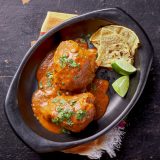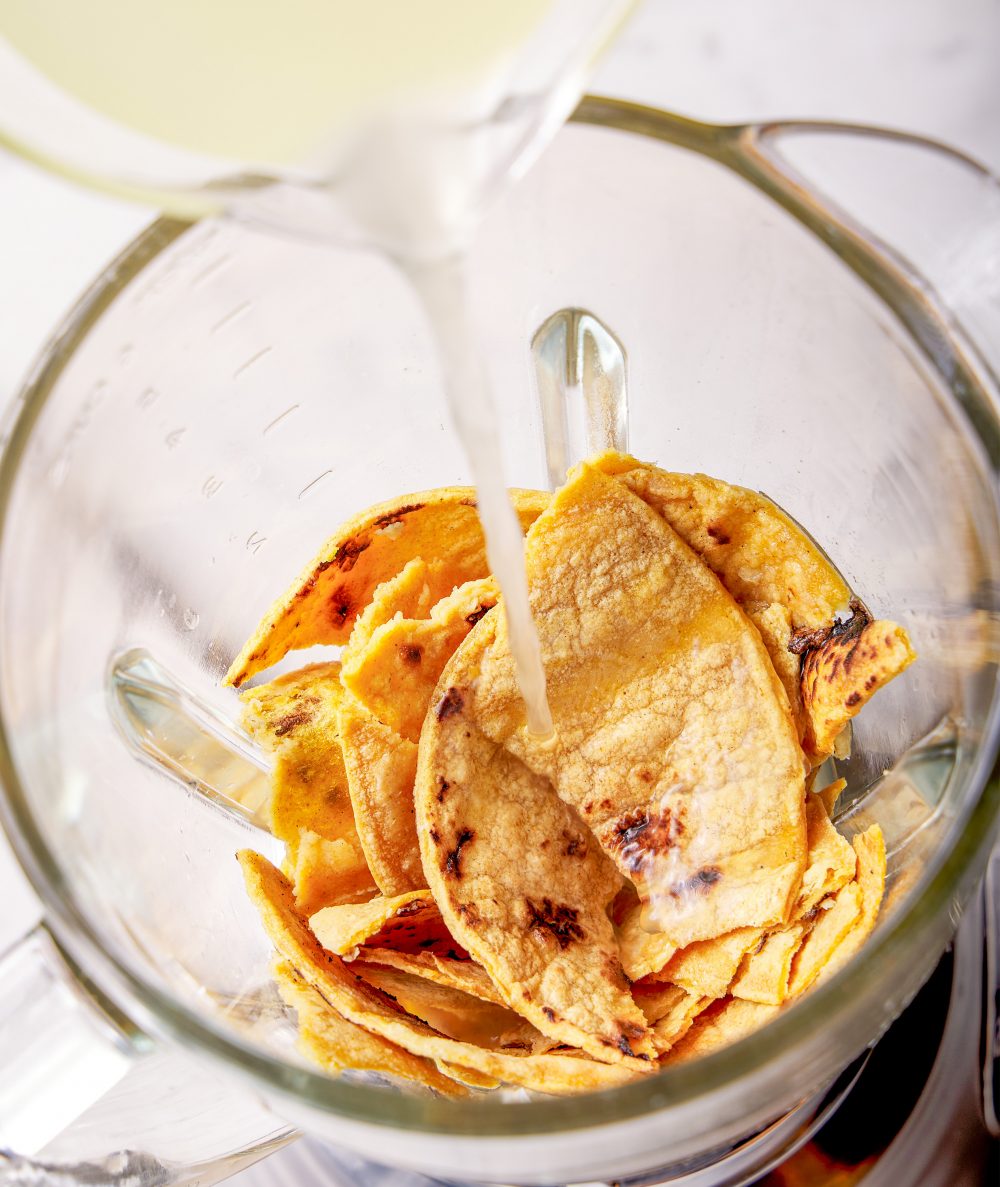Ask any Oaxacan what their recipe for mole is, and their response will probably be, “Which one?”
Besides having no single traditional recipe, Mexican moles are assembled from a widely varying combination of ground chilies, spices and other ingredients—and there are many more than the famously laborious mole negro. How many are there? That’s debatable.
“It’s the land of the moles, and people keep creating new ones. It’s all subjective, with so many people and so many subcultures. I try to stay away from a number,” says Bricia Lopez, a mole expert and author of “Oaxaca: Home Cooking from the Heart of Mexico.”
Some moles are deeply rich sauces that smother meat or enchiladas, others are simply sopped up with tortillas, while still others are brighter, more soupy dishes studded with vegetables for a complete meal in a bowl. They range from brick-red mole colorado made with several varieties of dried chilies, orangey-red coloradito that relies more heavily on fresh herbs, and bright green mole verde made with fresh jalapeños, poblanos, parsley and a bowl of vegetables.
Together, they are, according to Lopez, “the flagship recipes of Oaxacan cooking.”
Ingredients usually are toasted or charred, then blended into a sauce with a base of chicken stock. And while some moles are involved affairs that take hours and are reserved for special occasions, fortunately for the American home cook several are easily pulled off on a weeknight.
Yellow mole is the lightest and brightest of this boldly flavored, saucy bunch, and Lopez’s recipe takes well under an hour. Heavy on tangy tomatillos and spiked with plenty of lime juice, it still is rich with charred aromatics, chilies, cumin and cloves. It also includes masa, a time-saving ingredient that plays double duty.
Best known for being made into corn tortillas, masa is corn that’s finely ground after being nixtamalized, or cooked with an alkaline solution to remove the kernels’ tough skin. Freshly ground masa can be dried and made into masa harina, the masa flour most common in U.S. grocery stores.
Beyond tortillas, masa also is mixed with water to thicken soups and sauces, such as in yellow mole, where it adds body without the long, slow simmer required to reduce and concentrate more complex moles. And unlike cornstarch, in addition to thickening power, masa also adds a sweet corn flavor that helps balance the savory spices and chili heat.
We loved the ease of masa, but as we developed our own recipe, we hesitated to call for buying a whole bag of masa just to use a few spoonfuls. Our search for an alternative led to a deceptively obvious choice: corn tortillas. Which, of course, began as masa.
To create the base of our mole, we used a technique that applies as wonderfully to this mole as to a more classic chicken soup: poaching the meat with seasonings that seep into it and at the same time make a flavorful broth to build the dish. We added cumin seeds, oregano and black pepper to salted water to poach bone-in, skin-on chicken. We then set the chicken aside and soaked the tortillas in the poaching liquid. Quickly buzzing the softened tortillas with the broth in a blender created a slurry with the perfect consistency and flavor from the seasonings.
Except, we then learned that timing matters. Adding the tortilla-broth slurry too early turned the mole gloppy, and the corn flavor was lost. Reserving it for later in the cooking ensured the sauce stayed silky and flavorful.
The recipe also reminded us of the value of charring. Searing the vegetables in a dry Dutch oven before pureeing them with soaked chilies contributed smoky, bitter notes that balanced the ingredients’ natural sweetness. Because the yellow chilhuacle peppers that give this mole its name can be difficult to source outside Oaxaca, cooks often substitute darker guajillos for their similar fruity, bittersweet flavor. We did the same.
This traditional technique proved essential for flavor. In our testing, we found that the charring was essential, invariably producing a mole with depth and complexity.
But we weren’t done with the puree. We also concentrated the vegetables’ flavors by reducing the puree in oil we had infused with cloves and more cumin seeds. To add volume to the sauce and amp it up with chicken flavor, we also added a bit of the poaching liquid, simmering it to meld the ingredients.
Served with lime wedges and fresh cilantro, our yellow mole was bright with citrus and tomatillos, yet richly spiced with cumin and cloves. The guajillos lent an earthy backbone of mild heat, and the herbaceous oregano shone through—complex and simply delicious.
To Thicken Soups and Sauces, Go with the Grain
Mexican moles often are thickened with masa, the ground alkalinized corn used to make tortillas. Looking for a way to skip buying masa, we found a long tradition in Mexico and elsewhere of using tortillas and other breads for the same purpose in sauces and soups. Tuscan soups, including ribollita and pappa al pomodoro, rely on stale bread, as does Spanish salmorejo, a creamier take on gazpacho. And in Türkiye, bread thickens the garlicky sauce for Circassian chicken salad.
And the advantages of using tortillas or breads over masa and other thickeners such as flour and cornstarch go beyond convenience. When such basic starches are used as thickeners, they gelatinize with heat, absorbing liquid. That’s good for dishes with glossy, glazed sauces, but it can turn soups gloppy.
But since tortillas and bread are cooked, their starches already have been activated, for gentler thickening and better flavor. Their toasty notes enhance the overall dish, and the fermented nature of yeast-risen breads enhances the umami notes of the dish.
This approach will vary by recipe, but in general, tortillas (opt for corn; flour tortillas turn gluey) should be soaked in hot broth for five minutes, then pureed before adding to the dish. With breads, trim any crust, as its deeply browned flavors may be too pronounced.
The amount to use depends on the desired texture and other ingredients, such as pureed vegetables, but generally 1 to 1½ cups torn crustless country-style bread soaked in 1 to 1½ quarts liquid will create a bisque-like consistency. For tortillas, start with six or seven 6-inch corn tortillas









